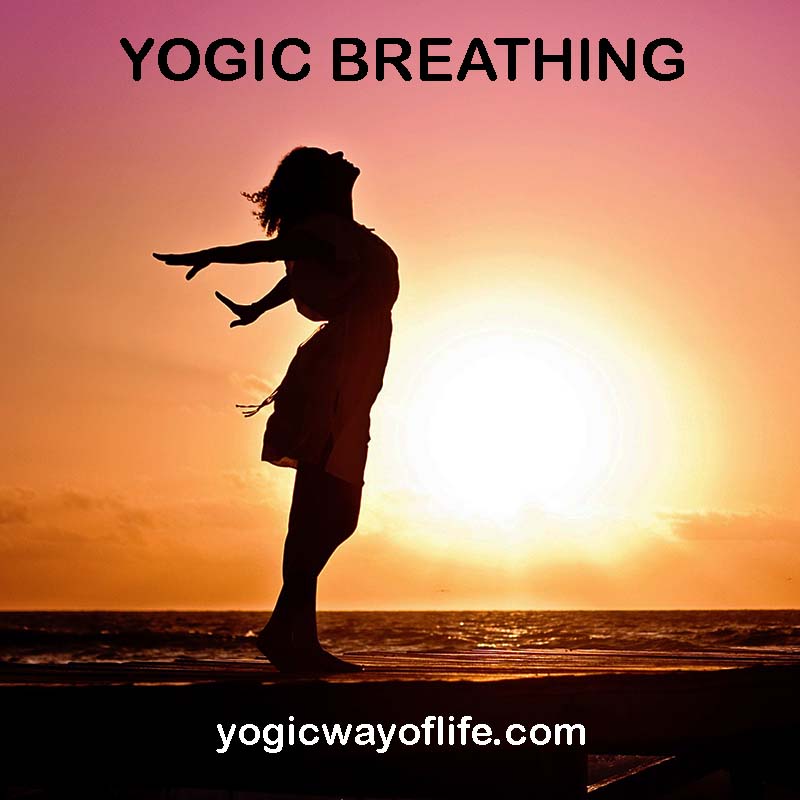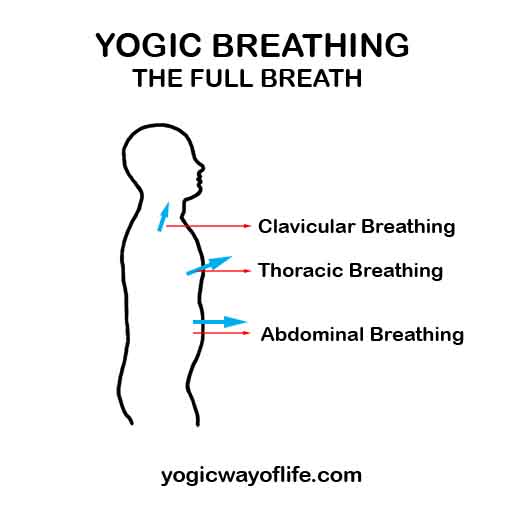Yoga and breath are deeply connected. When performing asana, pranayama and meditation, the correct breathing is essential to get the full benefits of the practice. Yogic breathing is finding your natural breath.
All living creatures breathe. Breathing is mostly an unconscious process controlled by the central nervous system. It goes on from birth to death, even if we are not aware of it – even in our deep sleep. If this process of breathing gets disturbed, then changes can happen in the natural breathing pattern over a period of time. This disturbance can be caused by many reasons ranging from anxiety, mental stress, bad postures and unhealthy work habits.
To understand the yogic breath, we have to observe the natural breathing in an infant. As babies we breathe naturally, without any distortions. If you look at a baby during sleep, the breath is slow and rhythmic. The belly goes up and down, expanding and contracting with ease. This is a fully relaxed breath.
When we are relaxed, we breathe from our abdomen. When we are tense, the breath tends to be short and comes from the chest and the neck region. The contraction and expansion of the abdomen is caused by the diaphragm moving up and down. The air is only filled in the lungs. But the belly movements are caused by a pressure difference due to the movement of the diaphragm. A full deep breath happens when the diaphragm moves downwards causing the belly to expand fully, along with the chest and the neck region.
What causes unnatural breathing habits?
Yogic breath is not just breathing from the belly. It is a complete breath. A complete breath involves breathing from the abdomen, chest and neck. This is the natural way to utilize the full capacity of the lungs, which includes abdominal expansion, thoracic expansion and clavicular (neck region) expansion.

Now, this relaxed full breath can get disturbed when we are tense or stressed out. During stress, we tend to breathe more from the chest and neck. Over a period of time this may become a habit, and we forget the natural relaxed way of breathing.
Natural breathing is also distorted by bad work postures. Observe yourself when you are working on the computer and see how different postures affect your breathing. By observation and awareness of our movements and postures, we can correct these postures and develop natural, healthy breathing habits.
It is also observed that women tend to breathe from the chest and neck during pregnancy. This is natural, as the diaphragm will make adjustments to its movements to accommodate the additional weight of the fetus. What happens is that after pregnancy too, many women tend to breathe from the chest and neck (clavicular breathing) due to this acquired habit.
All this can be easily corrected by creating awareness and practicing complete yogic breathing.
How do we practice Yogic Breathing?
Yogic breathing should come naturally. But since many of us develop irregular breathing habits over the years, it is good to practice breathing with awareness, in order to undo some those wrong habits.
- Sit on a chair, with palms resting on thighs.
- Relax every part of your body. Move your awareness to each part and consciously relax them – the face, neck, shoulders, chest, abdomen, buttocks, thighs, knees, legs and feet.
- Now, move on to observe your breath. Just relax and observe, without forcing the breath. Once you are fully relaxed, start the yogic breathing practice as described below.
- Start with a slow deep breath, filling the belly first. You will observe that in a relaxed state, the abdomen expands first. At some stage of abdominal expansion, the chest expansion (or thoracic breathing) takes over and becomes prominent. Further,at some stage of chest expansion, the neck expansion (clavicular breathing) takes over and become prominent. One stage merges into the other. You will observe that during all stages, every region expands to some extend or the other; yet only one region is prominently expanding in each stage. This is a natural process. Do not strain to do this. If you strain, the natural process will be disturbed. Just be aware of the natural respiratory mechanism.
- Similarly, when you are expelling air, observe the reversal of this process taking place. The air gets expelled from the neck region first and then from the chest and finally from the abdomen. Please note that when we say expelling from the abdomen, the air is getting expelled from the lungs only. The abdomen contracts only because of the upper movement of the diaphragm.
- Do a few rounds of this slow and natural breathing. Observe every movement related to your breathing process. Practicing this way, we can get back our natural breath, something we relished as a baby.
- You can try practicing this even during other light activities during the day.
Learning to breath naturally and fully is only one aspect of yoga. The science of pranayama explains that the breath can be expanded and controlled further to give both physical and mental benefits. Many types of pranayama are explained in the yogic texts. A serious yoga practitioner can use breath control to speed up his spiritual evolution and make the mind fit for higher practices of meditation and Samadhi.
Thus we see that yogic breath aids in our physical, mental and spiritual health.

